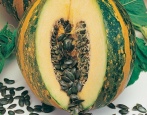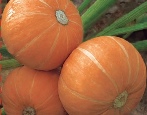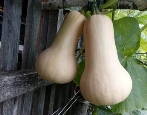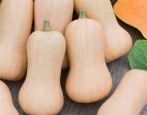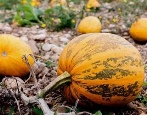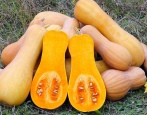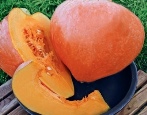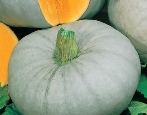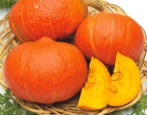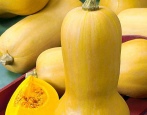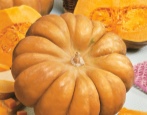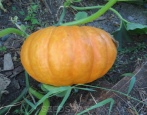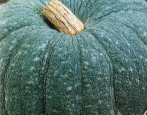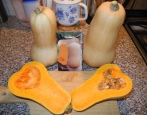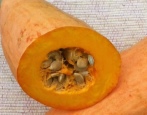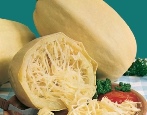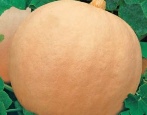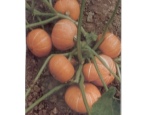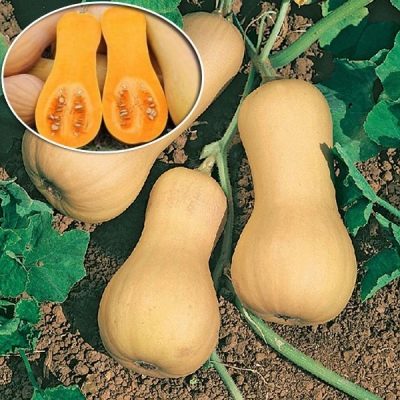
- Authors: Nastenko N.V., Kachainik V.G., Gulkin M.N.
- Year of approval: 2013
- Leaf color: green
- The form: clavate
- Weight, kg: 3,5
- Coloration: yellow
- Color of the pulp: yellow
- Pulp (consistency): crispy, dense, juicy
- Taste: very sweet
- Taste qualities: good and excellent
Pumpkin with an unusual name Guitar belongs to the developments of domestic breeders. Despite the fact that this variety is less than 10 years old, it has already managed to conquer the hearts of many gardeners with its high yield and excellent fruit taste.
Description of the variety
The guitar belongs to the sweet butternut pumpkin varieties. They began to grow it in 2013. The variety is large-fruited, the fruits are exclusively marketable. The plant does not impose special requirements on the soil composition; in favorable weather it is not damaged by diseases and pests. Drought tolerant.
However, the plant is very afraid of cold weather, even insignificant ones. Therefore, in cold regions, only greenhouse cultivation is permissible.
Characteristics of the appearance of plants and fruits
The annual pumpkin is a long-leaved plant with an incredibly strong root system. The rod can penetrate 2.5 meters into the soil, providing all the necessary nutrition for the fruit. The stem has a creeping type, it is rough to the touch, covered with fine hairs. Shows fast growth, reaching 5 meters in length.
The leaves are five-lobed, wide, bright green. The diameter of the plate can reach 0.3 m. On the surface of the leaves, spots of a whitish color are visible. The flowers of the Guitar are quite large, more than 10 centimeters in diameter, colored orange with a yellow tint. Flowers bloom when the sun rises, and when it sets, they close. Insects pollinate the pumpkin. Guitar blooms only at a stable temperature of 18 to 25 degrees.
The fruit is club-shaped, similar in shape to a guitar. That is why the variety got its name. The length of pumpkins can reach 70 centimeters, but more often it is 40-50 cm. The standard weight is 3.5 kg, but there are both smaller and larger fruits. The main spread is from 2 to 7 kilograms. Pumpkins are painted in a sunny yellow color. Their peel is quite soft, it is very easy to peel the fruit.
The pulp is also yellow, firm. Differs in good juiciness, crunch. A small seed nest is located in the wider part of the fruit. Seeds are narrow elliptical, cream in color. Fruits are well preserved, on average they can lie for 100 days. After that, the deterioration of taste characteristics will begin.
Purpose and taste
The guitar tastes incredibly sweet. Many gardeners say that this is the sweetest variety they have ever tasted. The taste of pumpkin is especially bright after heat treatment. It takes on delicate fruit and honey shades. Experts gave a taste assessment of 4.5 points.
The Guitar variety is regularly used in the preparation of various healthy dishes. These are fresh salads, baking, stewing, cooking. In any form, the pumpkin will be very tasty. They make amazing candied fruits, children's delicacies, mashed potatoes from it. Due to the large amount of carotene, the variety is recommended for people with vision problems.
Ripening terms
This pumpkin has a medium ripening time. It fully ripens in 110-120 days. Summer residents usually plan harvesting in September.
Yield
Due to the fact that each shoot can form a couple or three fruits, the yield of the variety is very decent. On average, you can count on 2.7-3.6 kg per square meter of the garden.
Growing regions
The guitar is a thermophilic variety, therefore it is mainly chosen by summer residents of the Central and Central Black Earth regions. Can also be planted in warmer climates. Growers in other areas are also making attempts at cultivation. In particular, these are the West and East Siberian, Far East and other regions. But planting in cool climates should only be done in greenhouses.
Growing and care
Only summer residents from areas with early spring and long warm summer can afford direct sowing into the ground. They sow in May or June. Others prefer the seedling method, which should start in April. Seeds intended for planting must undergo pre-sowing treatment, then they are sown in the ground. Experienced gardeners advise choosing peat cups for planting. When shoots arise, it is worth thinning. Only the strongest sprouts should remain.
The seedlings are transferred to the open ground at the age of one month. They are seated according to the scheme 80x60 centimeters, and if the cultivation takes place in greenhouses, then you will have to install supporting structures in advance. After planting, young shoots are well moisturized without touching the foliage. The substrate must be tamped, and also covered with agrofibre, if weather conditions require it.
Watering Guitars is carried out on average twice a week, in the evening. If the summer is rainy, it is worth stopping irrigation for a while, since the variety is afraid of excess moisture and responds to it by rotting roots. In the morning of the day following irrigation, the soil is loosened, and weeds are removed from it.
Fertilize Guitar twice during the entire growing season. The starting feeding is done three weeks after planting the seedlings, the next one is during the period of setting. Pumpkin reacts well to organic solutions of chicken, cow dung, green herbs. But it can also be fed with minerals intended for the accelerated growth of vegetables. It is recommended to dust the soil around the fruit with wood ash.
After the occurrence of ovaries, gardeners are advised to form a bush. Pinch the top, cut off several lateral processes. Such measures will allow the plant to produce a larger and more abundant crop.
Requirements for soil and climatic conditions
The guitar is an exceptionally thermophilic plant. It will develop actively at a minimum temperature of +18, but it is better if the indicators rise to 20-25 degrees. The variety does not tolerate frosts at all, the slightest drop - and the culture dies. This must be taken into account. But the variety is not afraid of drought, it can withstand even very high heat indicators. The plant is planted in open sunny areas.
The Guitar is not too whimsical to the soil, but minimal preparation will have to be done. It is necessary to ensure that the soil has neutral acidity and is not too wet or heavy. The rest of the pumpkin doesn't need anything else.
Disease and pest resistance
With abundant rainfall and excessive watering, this pumpkin variety is quickly affected by fungal diseases. Such ailments should be prevented by timely thinning and airing of greenhouses. Planks are placed under ripe fruits so that the vegetables do not touch the ground directly. The diseased parts of the plants are cut off and burned, the remaining mass is treated with fungicidal preparations.
Spider mites and melon aphids are something that gardeners who grow Muscat Guitar also have to deal with. Regular weeding helps to prevent pests, but sometimes this is not enough. Then it is worth adopting modern insecticidal agents.
